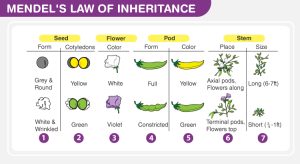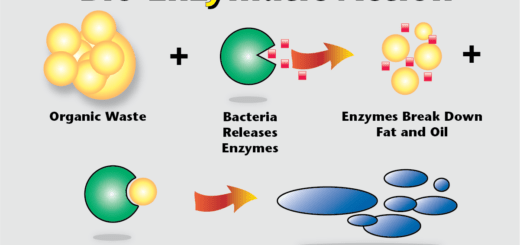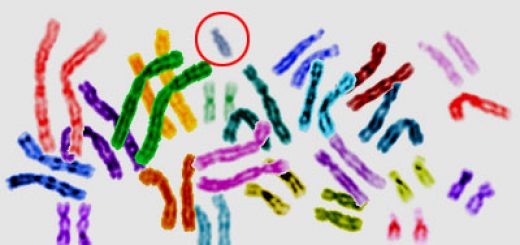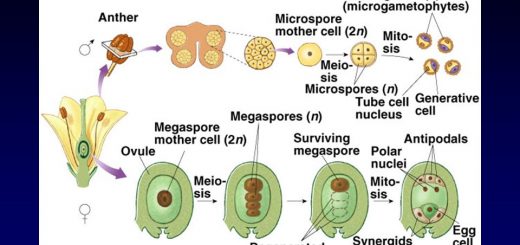Main principles of heredity, Mendel’s experiments in heredity and Principle of complete dominance
Mendel is considered as the founder of heredity because the scientific studies of heredity started with Mendel’s experiments on pea plane and according to the results reached by Mendel, heredity scientists have gathered a lot of information about how the hereditary traits are transmitted from one generation to another.
Main principles of heredity
Genetics explains to us the existence of similarities between you and your brothers or sisters as well as the differences in some external traits. This is because genetic traits transfer from a generation to another according to the basics and laws that geneticists reached.
Thousands of years ago, man has observed that some traits are transmitted from one generation to another, and scientists called them “Hereditary traits. Some other traits are not transmitted from one generation to another, and are originated as a result of the experience gained by the individual from the environment in which he lives, and scientists called them “Acquired traits.
Hereditary traits are the traits that are transmitted from one generation to another. Examples: Hair colour, Skin colour, Number of fingers, and blood groups.
Acquired traits are traits that aren’t transmitted from one generation to another. Examples: Skill of playing football, Learning to swim, Speaking in many languages, and learning to walk with children.
The skill of playing basketball isn’t a hereditary trait because it’s an acquired trait that can’t be transmitted from one generation to another. Learning to walk in children is not considered a genetic trait because it’s an acquired trait that can’t be transmitted from one generation to another.
The science that studies the hereditary traits and laws governing how they are transmitted is called “Genetics. Genetics is a science that researches the transmission of hereditary traits from one generation to another by studying the similarities and differences between the parents and the offspring.
A hermaphrodite flower is a flower that carries the male and female organs together. Self-pollination is a process of transferring pollen grains from the anthers of a flower to the stigmas of the same flower, or another flower in the same plant. Mixed-pollination is a process of transferring pollen grains from the anthers of a flower to the stigmas of another flower in another plant of the same kind.
Mendel was the founder of heredity
The scientist Gregor Mendel was the first founder of heredity because the scientific studies of heredity started with Mendel’s experiments on pea plants and according to the results reached by Mendel, scientists of heredity have gathered a lot of information about how the hereditary traits are transmitted from one generation to another.
Reasons for choosing Mendel for pea plant to conduct his experiments
- Pea plant is easy to be planted and it grows fast.
- It has several pairs of easily recognized contrasting traits.
- Its life cycle is short.
- It produces a large number of plants in a generation.
- Its flowers are hermaphrodite, so it can be self-pollinated.
- It can be easily artificially pollinated (human invention).
Despite the numerous different traits of pea plant, Mendel chose seven main traits to conduct his experiments:
- Flower colour: Red & White
- Flower position: End & Side.
- Seed colour: Yellow & green.
- Seed shape: Smooth & Wrinkled.
- Stem height: Tall & short.
- Pod ( fruit) colour: Green & Yellow.
- Pod (fruit) shape: Swollen & Sinuous.
Mendel’s experiments in heredity
First: Study the inheritance of any one pair of contrasting traits
Mendel studied the inheritance of each pair of these contrasting traits separated by the following specific scientific steps.
Mendel’s experiment to study the inheritance of the seed colour trait of pea plant
Mendel chose a pea plant that produces yellow seeds and another pea plant that produces green seeds, then he made self-pollination for these plants for several generations to be sure of the party of this trait. Mendel observed that:
- The plants that have yellow seeds produce plants with yellow seeds, generation after generation, and also the plants that have green seeds produce plants with green seeds. So, he concluded that: The colour of the seed is pure in the plants that he had planted.
- Mendel planted the seeds (pure yellow and pure green), and when they produce plants (parents) carrying flowers, he removed the stamens of some of these flowers before the anther becomes mature to ensure that the plant doesn’t self-pollinate.
Mendel made cross-pollination as follows:
By transferring the pollen grains from the anthers of plants’ flowers that produce green seeds to the stigmas of plants’ flowers which removed their stamens and produce yellow seeds.
By transferring the pollen grains from the anthers of plants’ flowers that produce yellow seeds to the stigmas of plants’ flowers which removed their stamens and produce green seeds. Then. he covered the stigmas of the pistils after pollination to prevent cross-pollination again. Then. he planted the produced seeds.
Mendel observed that:
All the produced plants which he named them the first generation have yellow seeds (at a percentage of 100%) and the green coloured seeds trait disappeared completely in the individuals of first-generation. So, Mendel called:
- The yellow colour of seeds is a dominant trait because it dominates over the green colour trait and appears in the first generation at a percentage of 100 %.
- The green colour of seeds is a recessive trait because it disappears completely in the individuals of the first generation.
Mendel let the first-generation plants do self-pollination. then he planted the resulting seeds. Mendel observed that: the produced plants which he named them the second generation: Three quarters are of yellow seeds (75 %). Its quarter is of green seeds (25 %). This means that the ratio of the plants of the second generation:
yellow seeds : green seeds
3 : 1
The green colour trait of seeds which disappears in the first generation, it appears in the second generation.
Principle of complete dominance
When Mendel repeated his previous experiment on the rest of other traits of the pea plant, the results were similar to those obtained from his experiment on the seeds colour trait, He named the dominance of the dominant trait on the recessive trait in the first generation. the term of “The principle of complete dominance“.
The principle of complete dominance is the appearance of a dominant hereditary trait in the individuals of the first generation when two individuals are crossed, one of them carries a pure trait contrasting the trait carried by the other individual.
On mating a pea plant of yellow seeds with a pea plant of green seeds, all the produced plants are of yellow seeds because the yellow colour trait of seeds dominates over the green colour trait of seeds according to the principle of complete dominance.
Dominant traits & recessive traits of pea plant which Mendel studied
- Flower colour: Dominant trait is red, Dominant trait is white.
- Flower position: Dominant trait is Side, Dominant trait is End.
- Seed colour: Dominant trait is Yellow, Dominant trait is Green.
- Seed shape: Dominant trait is Smooth, Dominant trait is Wrinkled.
- Stem height: Dominant trait is Tall, Dominant trait is Short.
- Pod (fruit) colour: Dominant trait is Green, Dominant trait is Short.
- Pod (fruit) shape: Dominant trait is Swollen, Dominant trait is Sinuous.
Mendel removed the stamens of pea plant flowers before the anther became mature to insure that the plant doesn’t be self-pollinated. Mendel covered the stigmas of the pistils of pea flowers during studying the hereditary traits to prevent cross-pollination with other flowers. Mendel let the pea plants self-pollinate for several generations to be sure of the purity of the trait.
You can follow science online on YouTube from this link: Science online
You can download Science online application on Google Play from this link: Science online Apps on Google Play
Mendel’s laws of heredity, Law of segregation of factors, Dominant trait & Recessive trait
Principle of complete dominance and Law of segregation of factors (Mendel’s first law)
Principles of Chromosomal theory & Interpretation of Mendel’s Laws according to chromosomes theory
The principle of complete dominance and Law of segregation of factors (Mendel’s first law)




